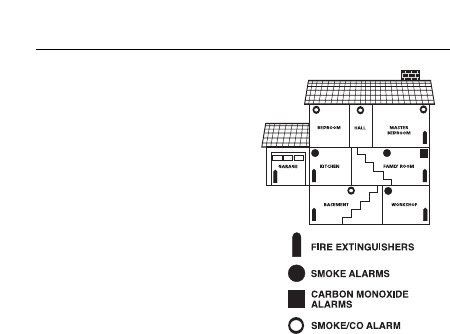
Fire Safety Information
27
Fire Prevention
Never smoke in bed, or leave
cooking food unattended.
Teach children never to play
with matches or lighters!
Train everyone in the home to
recognize the alarm pattern,
voice message warning and to
leave the home using their
escape plan when it’s heard.
Know how to do “Stop, Drop
and Roll” if clothes catch on
fire, and how to crawl low
under smoke. Install and
maintain fire extinguishers on
every level of the home and in the kitchen, basement and
garage. Know how to use a fire extinguisher prior to an emer-
gency. Second level and higher occupied rooms with windows,
should have an escape ladder.
Industry Safety Standards
NFPA (National Fire Protection Association)
For your information, the National Fire Protection Association’s
Standard 72, reads as follows:
Smoke Detection. Where required by applicable laws, codes, or
standards for the specified occupancy, approved single- and
multiple-station smoke alarms shall be installed as follows: (1) In
all sleeping rooms Exception: Smoke alarms shall not be
required in sleeping rooms in existing one- and two-family
dwelling units. (2) Outside of each separate sleeping area, in
immediate vicinity of the sleeping rooms. (3) On each level of
the dwelling unit, including basements Exception: In existing
one- and two-family dwelling units, approved smoke alarms
powered by batteries are permitted.
Smoke Detection - Are More Smoke Alarms Desirable? The
required number of smoke alarms might not provide reliable
early warning protection for those areas separated by a door


















